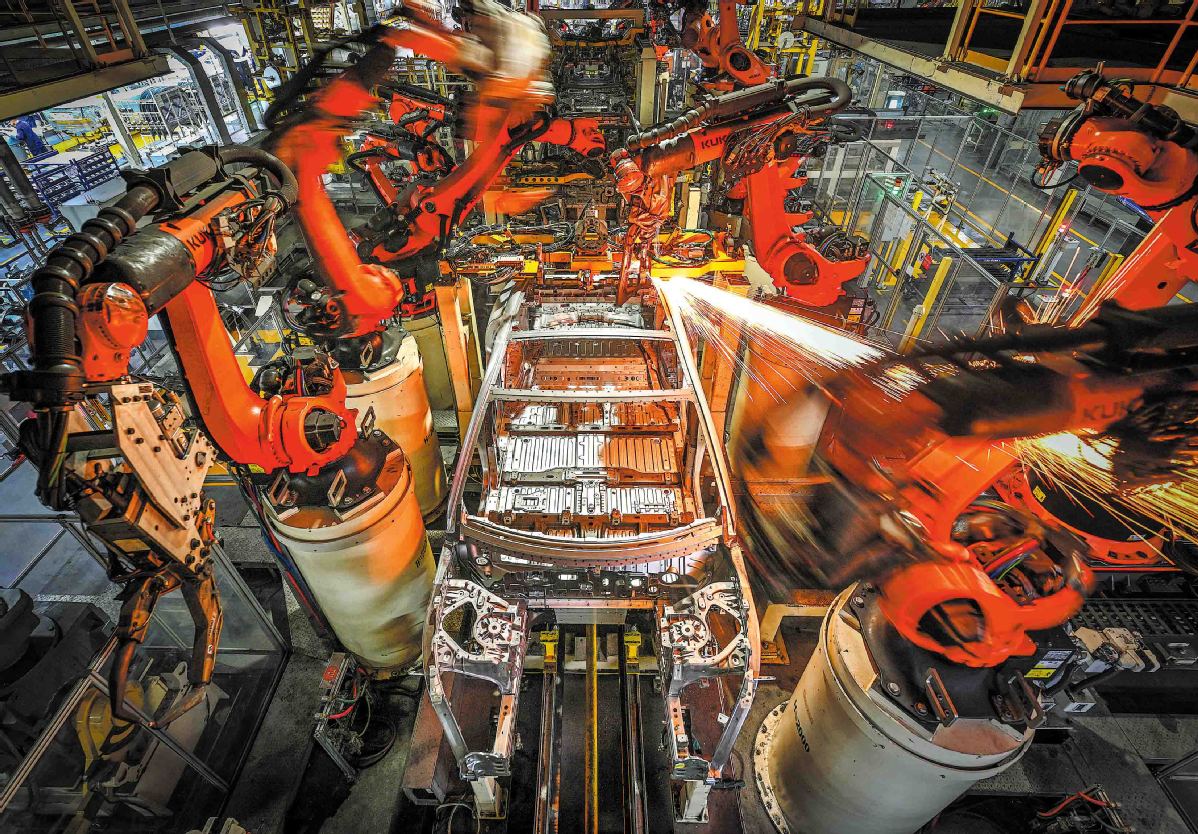Innovation, supply chains fuel NEV growth
Production of such vehicles surged 37.3% to over 9.6 million units in first eight months


BEIJING — At a new energy vehicle super factory in Beijing's suburban Miyun district, metal sheets are precision-pressed into body panels with microscopic accuracy, while robotic arms assemble components amid a flurry of welding sparks.
This highly intelligent facility, operated by Beijing Automotive Industry Corp, reflects the advanced state of China's NEV industry, which continues to set global benchmarks in terms of both scale and innovation.
The China Association of Automobile Manufacturers said the country's NEV production volume surged 37.3 percent year-on-year to over 9.625 million units in the first eight months, while sales reached 9.62 million units, a 36.7 percent increase, highlighting robust manufacturing capacity and strong market demand.
China produced more than 12.88 million NEVs and sold 12.86 million of them in 2024, and has led the world in NEV production and sales for the past 10 consecutive years.
Innovation clout
The NEV sector's impressive performance is underpinned by relentless technological innovation and a complete industrial chain in China.
A flurry of technological breakthroughs have emerged across the industry this year, spanning power batteries, intelligent driving systems, ultra-fast charging and ecosystem integration, underlining the sector's dynamism.
Earlier this year, CATL — a global leader in battery production — announced that its all-solid-state battery research and development had entered the pre-mass production stage, featuring an energy density more than 30 percent higher than traditional liquid lithium batteries and a lifecycle exceeding 2,000 charges.
Meanwhile, BYD, another Chinese NEV pioneer, recently unveiled its super E-platform, providing a charging speed that enables a 400-kilometer driving range with just a five-minute charge.
Furthermore, Chinese automakers are leveraging artificial intelligence to transform vehicles from traditional mechanical products into "smart mobile terminals", with learning, decision-making and interactive capabilities.
At the 2025 Shanghai International Auto Show in April, multiple automakers showcased their intelligent driving advances. Huawei presented its latest intelligent driving system Qiankun ADS 4.0, which reportedly cuts end-to-end latency by half and improves traffic efficiency by 20 percent, while Xpeng Motors unveiled its Turing AI autonomous driving chip.
Xin Guobin, deputy minister of industry and information technology, said that during the 14th Five-Year Plan period (2021-25), the country has continuously formulated industrial development plans at the national level. Enterprises within the NEV sector have stepped up investment, tackled a series of major technological challenges, and achieved substantial improvements in product quality and performance.
Xin cited examples such as the average range of Chinese-made electric passenger vehicles elevating to nearly 500 km, the unit cost of power batteries dropping by 30 percent and their lifespan increasing by 40 percent, as well as charging speed improving more than threefold.
























